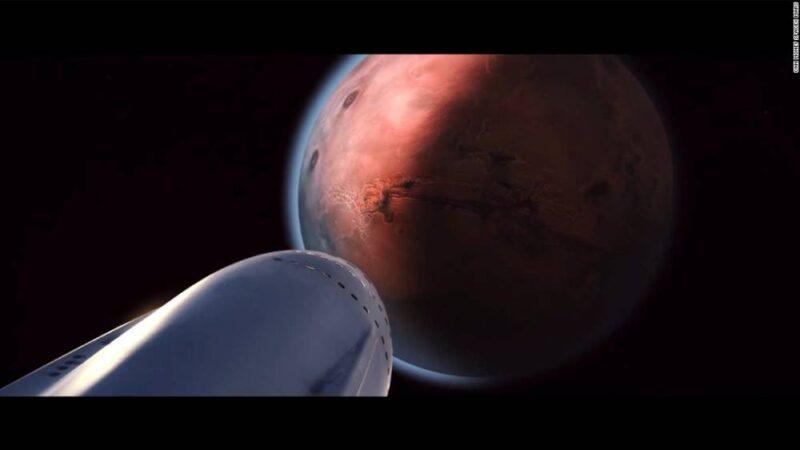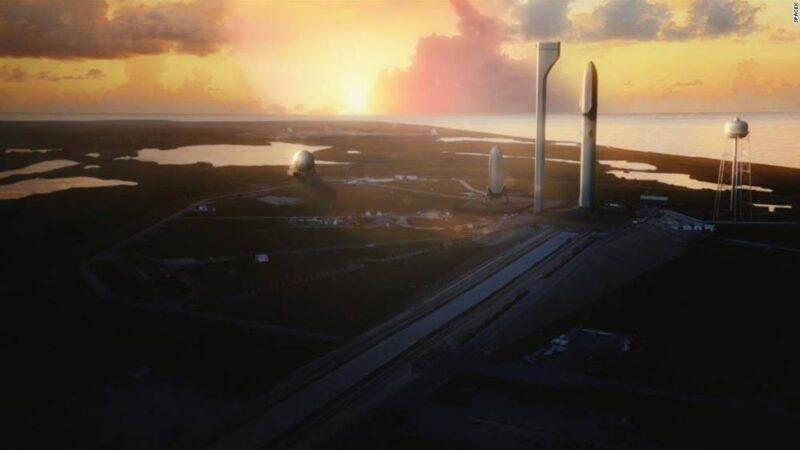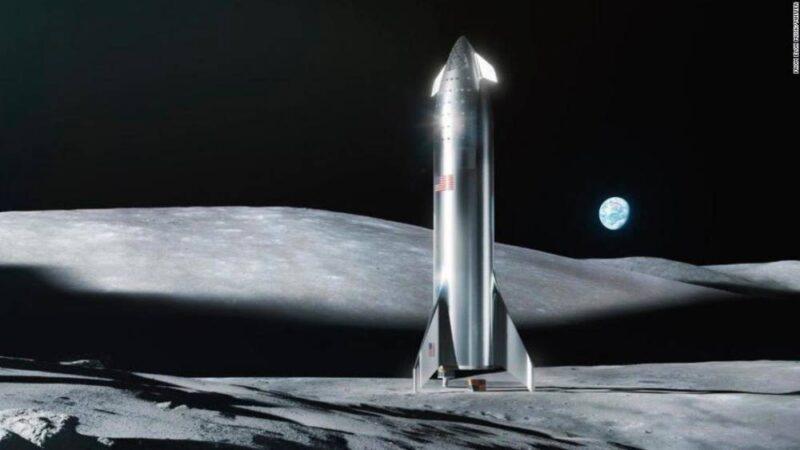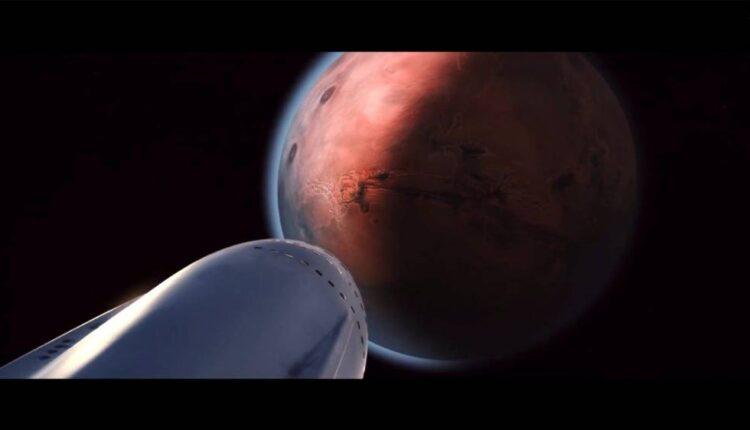Elon Musk’s long-anticipated presentation about Mars travel is this weekend. Here’s why you should watch
New York (CNN Business)Elon Musk founded SpaceX 17 years ago with a single goal in mind, to put people on Mars.
His other efforts — launching satellites, beaming internet from space, and flying astronauts to the International Space Station —are just means to that end. “I think we need to become a multi-planet species, and we were clearly not getting there based on the progress in the space industry,” Musk said in 2012. “So I started SpaceX to try to solve that problem.”
For years, his ideas for a rocket and spaceship capable of transporting people to Mars were purely theoretical.In 2019, however, one Mars transport concept came to life as an early prototype, and over the summer it completed several low-altitude tests in Texas. Now SpaceX is building a more powerful prototype that could be launched into Earth’s orbit by the end of this year. Read MoreOn Saturday, Musk is set to host an event at the Texas test site to give the most thorough update in two years about SpaceX’s interplanetary travel ambitions — plans that have undergone significant revisions. The company is pouring substantial time and resources into the building the hardware it needs to reach Mars,an enterprise that Musk has said could cost between $2 billion and $10 billion. Under current plans, the company would use Starship, a spaceship that would fly into orbit atop a massive rocket booster called Super Heavy. Starship and Super Heavy are expected to replace the company’s line of Falcon rockets, which regularly launch satellites into Earth’s orbit. Musk has said he wants a spaceship to make its first uncrewed trek to Mars in 2022, carrying cargo.Now that testing for the new system has moved from computer simulations to the real world, SpaceX engineers can make more concrete decisions about the spacecraft’s final design.That’s why the space industry and its fandom are anxious to hear from Musk, SpaceX’s CEO and lead designer, on Saturday.
The Interplanetary Transport System
Musk gave his first in-depth presentation about Mars travel in September 2016 at an international space conference in Mexico. He introduced the concept with the name “Interplanetary Transport System,” or ITS. At the time, SpaceX had recently figured out how to reuse its first-stage rocket boosters, which are the bottom part of the rocket that gives the initial thrust at liftoff.The talk focused on how SpaceX can parlay that technology into developing a far more powerful launch system that’s entirely reusable and inexpensive.SpaceX would look to create technology that could bring the price of Mars travel to about $200,000 per person, Musk said, down from the $10 billion he estimated it would cost using currently available technology.

SpaceX designed large rocket engines, called Raptor, to power its Mars rocket. The first Raptor engine test fire took place in 2016.ITS was billed as a transport system with a large spaceship capable of carrying up to 100 people. It would fly to orbit atop a gargantuan rocket booster. The spaceship would be topped off with fuel while in Earth’s orbit, make the six-month trip to Mars, and resources on Mars would be used to create a new batch of fuel for the flight home.He shared a rendered concept video of what ITS would look like. “It will look almost exactly what you saw, so this is not an artist’s impression,” he said.That, however, did not turn out to be true. Most technical details about ITS’ design were scrapped later on, such as Musk’s idea to use as many as 42 rocket engines on the lower booster.Musk used much of his time on stage discussing why he considers it so important to create an extraterrestrial colony.”History is going to bifurcate along two directions,” he told the audience. “One path is we stay on Earth forever, and then there will be some eventual extinction event….The alternative is to become a space-faring civilization and a multi-planet species, which I hope you agree that is the right way to go.”Using ITS, he added, a colony of 1 million people could be living on the Red Planet in 50 to 150 years.
BFR
One year later, Musk gave another presentation at the same space conference, this time hosted in Australia. The ITS name was ditched in favor of BFR, which stands for “Big F—ing Rocket” or “Big Falcon Rocket,” depending on who you ask.Visually, BFR looked a lot like ITS, though it was slightly scaled down, with the bottom rocket booster was shown to have 31 engines instead of 42.Musk in 2017 addressed one question that skeptics had been kicking around for the past year: How SpaceX planned to pay for this thing. He suggested that BFR could take over all of SpaceX’s ventures, including launching satellites and resupplying the International Space Station, so that “all the resources that are used for Falcon 9, Heavy, and Dragon can be applied to this system.”

Musk’s vision for BFR also included plans to eventually establish a lunar base, which he dubbed “Moon Base Alpha.”Musk has since said that the Falcon 9 Block 5, the latest design upgrade for its workhorse rocket, would be the last major upgrade as SpaceX shifts focus to BFR.Musk also unveiled another potential use for BFR — shuttling people between cities on Earth at unheard of speeds. Riding on just the spaceship portion of BFR, without the large booster, could get a group of passengers from New York to Shanghai in just half an hour, Musk said.His overall timeline for getting to Mars stayed the same: Cargo ships would reach the planet in 2022. And the first humans could follow in 2024.
Starship and Super Heavy
Musk did not give a detailed public speech about BFR in 2018. Though he told reporters after the successful maiden flight of SpaceX’s Falcon Heavy rocket — the most powerful operational launch vehicle in the world — that he now planned to put most of his company’s engineering resources into developing BFR.Later that year, he hosted a press event at SpaceX’s California headquarters at which he announced Japanese billionaire Yusaku Maezawa put down a sizable deposit to fly himself and a group of artists around the moon aboard BFR.But Musk relied on sporadic tweets to keep people updated on how the BFR architecture was evolving. In November 2018, Musk announced that SpaceX ditched the BFR nomenclature in favor of Starship, for the upper spaceship, and Super Heavy for the first-stage booster.In January 2019, Musk said via tweet that Starship would no longer be constructed out of carbon fiber — the world’s preferred material for spacecraft. Instead, he planned to use stainless steel. He shared new renderings of the towering spacecraft, now with a silvery sheen.In an interview with Popular Mechanics, Musk said he made the switch for a couple reasons. For one, steel is much cheaper than carbon fiber. For another, steel has more tolerance for high temperatures and could weather the wear-and-tear of interplanetary travel. The downside, as the space community noted, is that steel is heavier than carbon fiber, so it would make Starship less efficient.Shortly after Musk’s January tweet, he shared images of SpaceX’s first-ever prototype vehicle, which was nicknamed “Starhopper” and went on to conduct short hop flights in Texas this year.On the financial side, SpaceX aggressively raised money from private investors over the past year, as well as taken on about a quarter-million dollars in debt and cut jobs to save money. SpaceX has also said Starlink, its satellite internet constellation, could bring in billions of dollars in annual revenue that could help fund Starship and Super Heavy development.

Musk has also suggested Starship could be used for lunar exploraiton as well as crewed exploration into deep space.SpaceX acknowledged in a statement after the layoffs were announced that Starlink and Starship would be hugely expensive endeavors, both of which “have bankrupted other organizations.”
But the company has powered ahead. Two more Starship prototypes are currently under construction — one in Texas and another in Florida.The new prototype is expected to be a significant upgrade, adding two or more rocket engines. Musk said in a tweet last month that SpaceX will conduct one hop test with the new vehicle in October. Then, the company will attempt to send the test vehicle into Earth’s orbit for its highest-stakes test yet.
Source: edition.cnn.com

